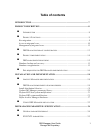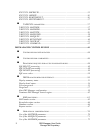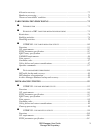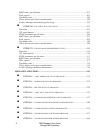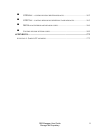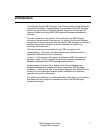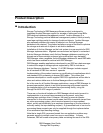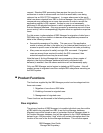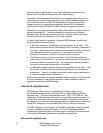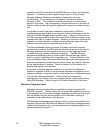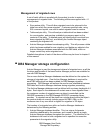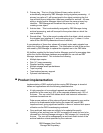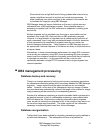10 DB2 Manager User Guide
StorageTek Proprietary
within the table to be released and re-used, enabling a reduction in the
overall size of the DB2 tablespace used for table storage.
Reduction in the tablespace size will give a corresponding reduction in the
overall amount of disk space required to support DB2 database usage, and
also reduce the amount of DB2 housekeeping processing (in particular,
image-copy and re-organization processing) required for the database
containing the table(s) enabled for DB2 Manager migration processing.
Migration of rows is performed using a batch utility which is supplied with the
product (see page 80). Rows are selected for migration via customer-
specified rules, which are specified using SQL command syntax, allowing
maximum flexibility for selection of rows to be migrated.
In order to be eligible for migration of rows by DB2 Manager, a table must
have the following characteristics:
• A DB2 edit procedure (OTDBP300) must be defined for the table. This
edit procedure (known as the “DB2 Manager SQL intercept”) intercepts all
row insert, update and retrieve operations performed by DB2 on the table,
and determines whether migration of an unmigrated row is to be
performed, or whether retrieval of a migrated row is required.
• The table must have at least two partitions. One of these partitions is
used as the “archive partition”, and will be used exclusively for storage of
the archive stubs for migrated rows. All unmigrated rows will be held in
the one or more remaining partitions of the table.
• An additional single-character column must be defined for the table. This
will contain an archive indicator identifying whether a row is migrated or
unmigrated. Views of the table are defined to allow existing applications
to access the table without modification.
Refer to the discussion on product implementation in chapter 2 of this manual
for a full description of the actions required in order to enable a table for
migration processing by DB2 Manager.
Access to migrated rows
DB2 Manager allows access to migrated rows without requiring any
modifications to applications which use SQL to access tables containing
migrated rows. All types of applications (batch, TSO, CICS, IMS etc.) are
supported. Multiple migrated rows from a single table may be accessed via
a single SQL command, using a cursor operation to retrieve individual rows.
An application may also access migrated rows from more than one table via a
single SQL command, using standard DB2 JOIN or UNION processing.
The DB2 Manager “control region” (an OS/390 started task) must be started
in order to enable this retrieval support. All Archive Manager database
access will be performed from the control region, allowing full shared access
to the Archive Manager database(s) containing migrated data.
Retrieval of migrated rows



